By Jeffrey A. Rendall
It's odd how technology changed communications in our world, with most folks now keeping in touch by cell phone, email notes and various electronic devices. It seems electronic gizmos are everyone's constant companions. But for some, interactive processes and methods remain very natural. And a few folks have even managed to defy modern trends and do things the old fashioned way -- meaning they communicate person-to-person.
Golf Course Designer Tom Fazio is one such individual. He says he doesn't use email, and if you'd like to reach him, you'll have to leave a message, because he doesn't have voicemail either. He does have a cell phone, though.
Despite his disdain of modern communications enhancements, Fazio managed to work himself to amongst the top of his profession. Fellow architect Rees Jones made news recently with his remakes of this year's US Open and PGA Championship venues, but it was Fazio who reworked America's most famous golf course icon, Augusta National, before the 2002 Masters.
Further, Fazio's Caves Valley (near Baltimore) hosted this year's US Senior Open Championship, and he's got several other award winners in the Mid-Atlantic region, such as Bayville in Virginia Beach, Two Rivers Country Club in Williamsburg, Independence Golf Club in Midlothian (the VSGA's new facility) and The Virginian in Bristol, Virginia (amongst others).
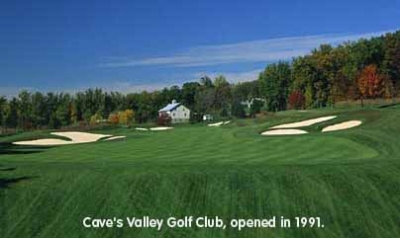 |
Catching up with Mr. Fazio, I asked him about some of his course design philosophies while preparing course reviews for Independence Golf Club and Two Rivers Country Club. Fazio's love of the Mid-Atlantic region is evident in his words, and we'll all be fortunate if he gets his wish to design many more courses in our neck of the woods:
Q: Mr. Fazio, a lot is being said these days about variety in golf design. Golf course designers really seem to go out of their way to avoid being 'tagged' with any sort of design signatures. How important is variety in your work?
Fazio: It's my #1 goal. We really try to fit golf courses into the individual environments they inhabit -- we want to design a distinctive, different type of golf course every time.
For that reason, I love designing golf courses in Virginia and Maryland because they're great states, with so much variety from the coastal areas of the east to the mountains in the west.
That country up there is beautiful terrain for golf. There're hundreds and hundreds of golf courses just waiting to evolve out of the Mid-Atlantic landscape, which is almost an ideal setting for golf.
My course out in Bristol, the Virginian, is set in a gorgeous, great environment, as well as the environment in Richmond's great, and along the coast is great.
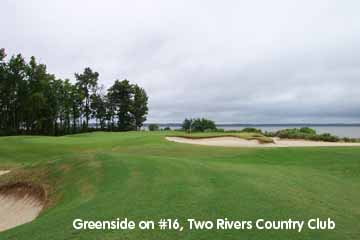 |
They're all very different, and I like that variety. I would not want to be selected to design golf courses in the region because all my golf courses looked alike.
I just opened a new course near Hilton Head Island called Berkeley Hall. It's the second golf course we've opened there, 36 holes total. Well, I've built six golf courses within five miles of the bridge to Hilton Head, and they happen to be three 36-hole golf complexes. But they're six different golf courses on all basically the same properties.
So that's always been my philosophy of design, to make each course distinctive and different. As long as I'm able to do that, I hope to be around a long time. I'm 57, and I hope, God willing, to be around long enough to design a couple hundred more golf courses.
Q: I've noticed, on your designs that I've played, that you include a couple par fives that would be reachable in two, and a couple that are probably three-shotters. Curtis Strange has said on TV that when he designs a course, he likes to try and put in a drivable par four somewhere in the layout. So do you consciously try to put, say, some holes on your courses that would fit a specific type of description?
Fazio: That's not something that I try to look at. It sounds good on paper that people write about -- reachable par fives. It all has to do with what's reachable. You know, Tiger Woods can reach a 600-yard par five in two, or David Duval, or Davis Love. It's a matter of opinion now as to what the 'average' player can do.
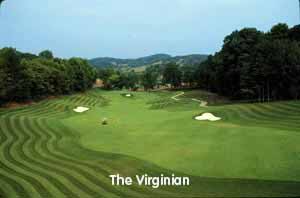 |
In the case of an average player who's a 20 handicap, they're not reaching any par fives in two. But I think to create short, medium and long-range par fives is a logical approach. But, again, from my standpoint as a designer, if I have a philosophy to follow, which I followed on all my golf courses, they'd all tend to look alike.
So I wouldn't say I have a particular philosophy. In most cases, it just happens to fit on the land that way.
Q: Speaking of particulars, I've also noted that your par threes are always great golf holes, with different challenges and looks, even within the same course. Do you devote special attention to those?
Fazio: Well, par threes are actually the easiest holes to design. And they also become the places where you utilize the land the best. If I have any philosophy at all, I try to simplify every issue -- those that tend to complicate our lives.
Generally speaking, when designing a course that best incorporates the layout of the land, which is your major focus in the first place, you use the par threes as "fillers." Now that sounds negative, but it can become positive because par threes are put on the most difficult terrain you have on a particular site. And that helps you to create the links, the bridges that you have from hole to hole.
Q: You're also known for dramatic bunkering. Is there a story behind that?
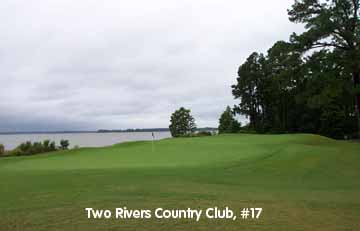 |
Fazio: Again, that particular issue -- that has more detail relative to what you want to create, because that is a "frame." As an artist, you do have the decision making process to put whatever frame you want on your picture. You may want metal, you may want gold, you may want silver, you may want ornate -- so you have the potential to create a picture if you do that.
Bunkers are the same way. There're different styles and different looks that you create, and we evaluate each individual site and go with a style that we think matches the environment. Then we create a setup for each hole, for that frame, that would lead to a very artistic and dramatic look. And that's how different styles of bunkers evolve.
Q: Would you say when you start out to create a golf course your goal is to ensure that it's playable enough that people want to come back?
Fazio: That's a very important goal. Again, playability, it's a word defined in the detail aspect. I think it's different for everybody. Playability for Tiger Woods is different than it is for a Tiger Jones.
Obviously your goals are going to vary for each client and what type of course they want to build, but in general, what fits the land is what's there. I don't start out with a philosophy and say 'Oh, because this is public, we're going to have wider driving areas.' Even though that could be a way to do it. There's nothing wrong with people who do that.
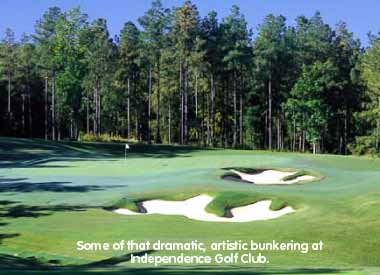 |
But I don't start off that way, with a preconceived idea -- we start off with what fits the land the best in that particular case. For example, if that piece of land happens to have mature, spectacular, tremendous trees on it, we won't knock them down just to create wide driving areas. If we have a site where there aren't trees of substantial growth, and removing them might lend itself to creating that type of golf course, we may do that.
My goal has always been for the best players in the world to come to one of my courses and say 'Wow, that was a great experience.' But I also want those young kids who are just starting to play golf to say the same thing. It's a goal to make the course challenging and memorable and playable for all types of players, yes.
Q: Along those lines, I've noticed that your courses seem to be very friendly off the tee. Why is that important to you?
Fazio: Width of your setbacks really depends on the client and type of course. But when you've got a commitment to golf, width becomes a very important issue to me as a designer.
Length, even though people like to talk about that, and always one of the first questions asked is how long a golf course is -- the number one important factor to me in creating a golf course is width. And that in itself is very important, because that obviously relates to the quality of the golf you end up with.
You can produce -- in terms of the market and the type of player -- wide driving areas and ample room to play. This is extremely important and that starts right up front with the commitment from a developer. It usually sets the tone for the quality of golf you're going to have.
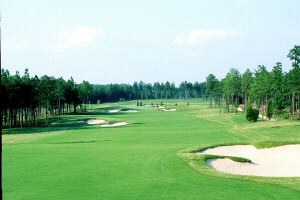 |
Q: What are some other important issues?
Fazio: If it's in a community, having adequate setbacks from the homes, so that you create a good overall feel of the property. The golf shouldn't interfere with the development; likewise, the development shouldn't interfere with the golf. That's easily said, not as easily accomplished, but you need to have space to make that happen.
The other factors become the commitment of the resources, the financial commitments to construct the quality product. The things that go underground are extremely important, such as the drainage systems and the infrastructure.
In each particular case, there must be a blending of the golf course construction with the environmental constraints and issues of the property. All these elements, including putting together the right team of people from construction management through the environmental process of permitting the project, are extremely important.
Q: While, at least in my observance, your courses are always 'driver friendly,' the green complexes tend to be very challenging with chipping swales, deep bunkers and undulating greens. Is this your intention?
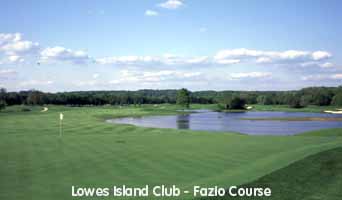 |
Fazio: Again, it's custom tailored to each site. I just assess what would fit well with each site, with the scale, and the terrain, the views we have to work with. These things make each course fit each particular project.
So I wouldn't say there's any theme or any trend that we look at. It's just what we feel fits each course and property.
It's been said many times that the modern trend in golf course design is towards minimalization -- meaning golf fits the environment, rather than molding the environment to fit the golf. The old classic courses just seem to fit the land they occupy, and the newer courses seem to be trending back to way things 'used to be.'
Tom Fazio probably wouldn't be considered a 'traditionalist' in that sense, since he's been known to create some rather 'non-traditional' layouts, such as Shadow Creek in Las Vegas.
But at the same time, there's little doubt he's crafted many other courses that skillfully use native vegetation and the local environment to enhance the golf experience. His courses in this region are good examples. He's skilled at, and recognized for, his ability to create distinction in his work. And his courses certainly fit the land.
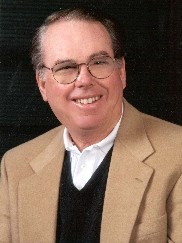 |
We're fortunate to have an excellent representative sample of his work here in the Mid-Atlantic, and we can also probably find some of his layouts when we travel. Or even on TV, as the recent 'Battle of Bighorn' demonstrated.
Wherever you see him (or his work), you'll get a sense of belonging. And you won't need a palm pilot, email message or FAX machine to discover it.
Details:
For more information on Tom Fazio, I suggest you access the American Society of Golf Course Architects' website, www.asgca.org.
| Related Links | Comments on this article? | |
|
Maryland National Golf Club Hollow Creek Golf Club Rocky Gap Resort PB Dye Golf Club in Ijamsville Whiskey Creek Golf Club |
E-mail Jeff Rendall, Editor: jrendall@golftheunitedstates.com |












